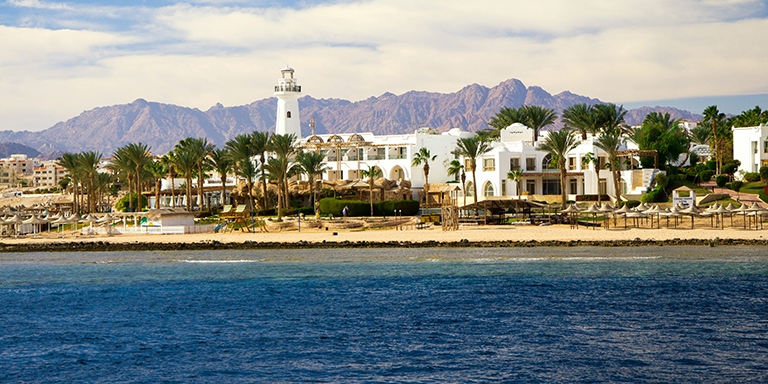The 2022 United Nations Climate Change Conference (COP27) was held at the appropriate venue of Sharm El Sheikh in Egypt, an extremely sunny resort at the southern tip of the Sinai Peninsula.
Appropriate because a strong theme running through the various proposals, plans and success stories in the global effort to reduce fossil-fuel production was the rapid rise in photovoltaic (PV) solar energy as a leading player. And Mainland China has a commanding lead in PV equipment production, commanding 80% of the global market according to the Observer Research Foundation.
A wide range of new energy solutions, including PV, will be on show at this year’s Eco Expo Asia which starts on 14 December in Hong Kong. The event is jointly organised by the Hong Kong Trade Development Council (HKTDC), Messe Frankfurt and the Environment and Ecology Bureau of the Hong Kong Special Administrative Region Government.
Hydrogen hopes

Another area of green energy that featured prominently in Egypt was the use of electrolytically generated green hydrogen for energy storage and as a transport fuel.
Measures to be rolled out worldwide between COP27 and its successor COP28, to be held in the United Arab Emirates in late 2023, include ramping up deployment of essential infrastructure projects, including at least 50 large scale net-zero emission industrial plants, at least 100 hydrogen valleys and a package of major cross-border power grid infrastructure projects, the United Nations Climate Change High-Level Champions reported.
The systematic strengthening of financial and technological assistance to developing countries and emerging markets to support their transitions is also planned. This will be backed up by a range of new financial measures, including the world’s first major dedicated industry transition programme under the Climate Investment Funds.
COP27 deliberations came against the background of a sharp rise in energy costs across the world, particularly in Europe. The International Renewable Energy Agency (Irena) reported that fossil-fuel gas prices in Europe averaged 4.9 times more in the period January to April this year than in the same period last year. At the same time, steam coal prices in Germany were 2.8 times higher in the first quarter of this year compared to the same period last year.
These hikes had a predictable knock-on effect for electricity. In March this year, wholesale electricity prices in these markets were 4.8 to 5.4 times higher than in the same month last year.
Renewables growth
As well as being the leading PV producer, the mainland is also the largest market for new onshore and offshore wind, solar PV and hydropower equipment, and leads in terms of potential savings by economy. The mainland could see generation-cost reductions in the order of US$31 billion (56% of the global total) this year due to the new renewable capacity it added last year.
The global weighted average levelised cost of electricity (LCOE) of utility-scale PV plants declined 88% between 2010 and last year across the world, from US$0.417 per kilowatt hour (kWh) to US$0.048 per kWh.

Irena also noted that the mainland’s share in all the key manufacturing stages of solar panels exceeded 80%; and for key elements including polysilicon and wafers, this was set to rise to more than 95% in the coming years, based on current manufacturing capacity under construction.
Association of Southeast Asian Nations (ASEAN) economies are key trading partners of both the mainland and Hong Kong. In a report released shortly before COP27, Irena said ASEAN could transition from just a 19% renewable energy share in final energy in 2018 to 65% by 2050, and in the process reduce energy-related carbon dioxide emissions 75% compared with current policies.
In the near term to 2030, Irena said that emphasis should be placed on key transition technologies such as increasing solar PV capacity to more than 240 gigawatts (GW) of installed capacity; putting over 13 million battery-powered electric vehicles (EVs) on the road with 3.7 million charging stations; and widescale efforts to improve energy efficiency, materials efficiency and the circular economy, in addition to scaling-up sustainable bioenergy, hydropower and geothermal energy sources.
In the longer term, regional power system integration should be fostered and improved to further utilise a total renewable energy power expansion reaching around 2,770GW (2.77 terawatts) to 3.4TW by 2050. The phaseout of coal-fired power plants should be expedited in the near term, and the expansion of fossil-fuel-dependent infrastructure avoided wherever possible to avoid stranded assets.
Transmission and distribution grids will need expansion and reinforcement to meet growing electricity consumption and enable more efficient and reliable system operation. This will require an international expansion of lines nearing a total 200GW by 2050, deepening power system integration across the ASEAN bloc.
Renewable power capacity, power grids/infrastructure and enabling technologies (such as storage) would need more than US$5 trillion in investment over the period to 2050, making up two-thirds of energy investment.
In transport, EVs will need to grow to more than 100 million cars and almost 300 million electric two- and three-wheelers by 2050.
Meanwhile, clean hydrogen and its derivatives provide an alternative solution for decarbonising shipping and are important for some heavy manufacturing industrial processes. Hydrogen demand for domestic purposes will exceed 11 million tonnes, while additional fuel will be needed for international bunkering.
Related links
Eco Expo Asia
Irena
COP27

